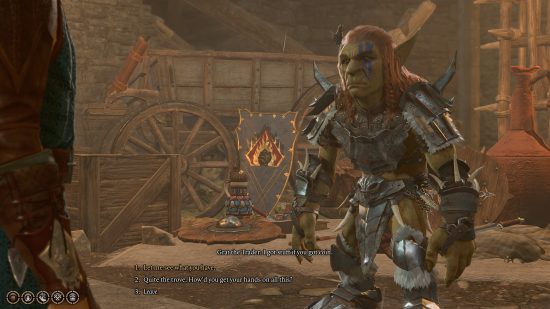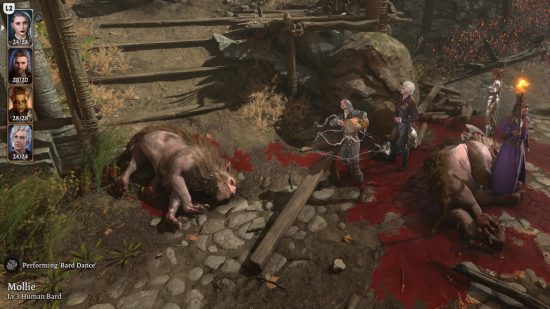If the headline hadn’t made it obvious, Baldur’s Gate 3 is myGame of the Year. It’s gratifying to see awards bodies paying similar attention. But while The Game Awards praises BG3’s direction, narrative, and community, there’s one thing about the game that wasn’t mentioned in its eight nominations – replayability.
300 hours in, I’ve created countless BG3 builds with a variety of Baldur’s Gate 3 classes. I’ve courted many Baldur’s Gate 3 romances and followed the story to several endings. I’ve also just finished my eighth run of the goblin camp in Act One – and not one visit has been the same.
This section shows off the depth of Baldur’s Gate 3 better than most. Your objective is simple: infiltrate the camp, decide whether you want to harm or help its three leaders, and then get out of dodge. Its puzzles and minor encounters are always the same, and your goal never changes. Why, then, is it still so compelling to play after seven previous attempts?
The devil is in the details. Larian has created such an intricate, interactive environment, that its minutiae can entirely change the result of a combat scenario. If you happen to be hiding in the rafters of the camp when Minthara decides to attack, you’re playing a very different game from one where you fight her face-to-face.
Once you’re familiar with its beats, Baldur’s Gate encourages you to experiment with an encounter. I’ve already explained in another article how playing hard mode as myself created an entirely new ‘send in the bear’ strategy. And, like a scientist, I’ve trialled all sorts of Baldur’s Gate 3 spells and consumables, painstakingly placing invisible allies or flammable objects around the camp before the goblins start to get suspicious.
Combat mechanics are rich, but the dialogue options may be even richer. Your choice of Baldur’s Gate 3 companions and Baldur’s Gate 3 races add surprising nuance to the experience. Play as a Drow, and you’re able to get away with far more than a surface elf. Become a BG3 Barbarian, and you can force your foes to eat their own crap rather than fight you.
Plus, while I’ve been setting up new scenarios in my Dungeons and Dragons dollhouse, Larian has been studiously upping its game. I mean this literally – patch after patch has brought fixes and tweaks to Baldur’s Gate. The CRPG has evolved so much since I began playing in Early Access that I’m yet to replay an area without something having changed.
Half of my playthroughs aren’t even that new – I fall into old habits fast, making the same choices and falling for the same characters. But even the familiar remains fresh.
All this rests on a sturdy foundation. At its core, Baldur’s Gate 3 is replayable because the original meat and bones are so satisfying that I want to see them again (and again, and again). After completing my Baldur’s Gate 3 review playthrough, I immediately began anew.
I’m not alone in my addiction. Locally, I have a real-life D&D group with nearly 900 in-game hours racked up between us. Globally, the Golden Joystick Awards just named Baldur’s Gate its Game of the Year. I’d like to see a similar win at this year’s Gamer Awards. It really is that good.
For more gushing about the Gate, here are five lessons DnD should learn from BG3. Or, if you love tabletop RPGs as much as CRPGs, here’s the lowdown on the DnD classes and DnD races.
Source: Wargamer






